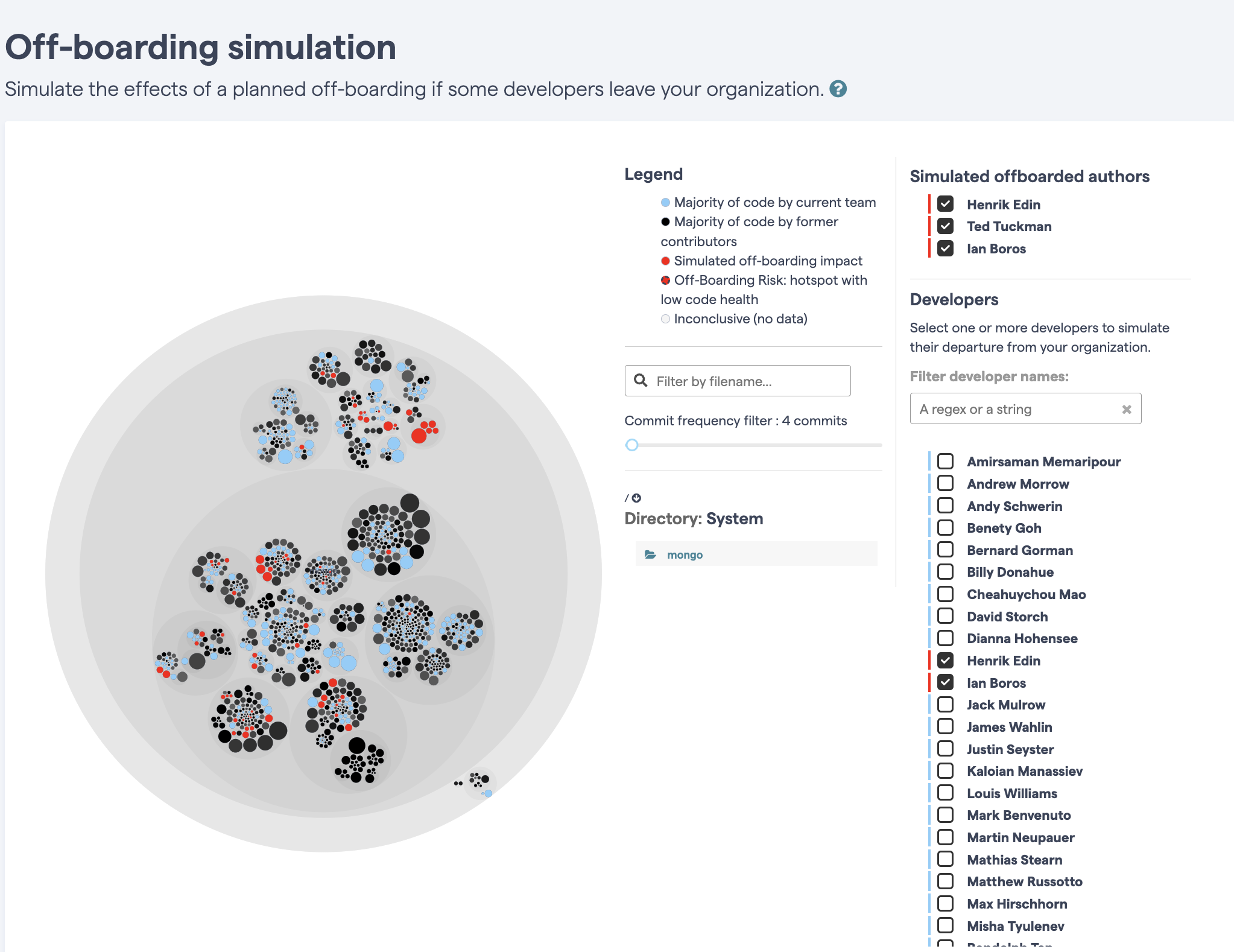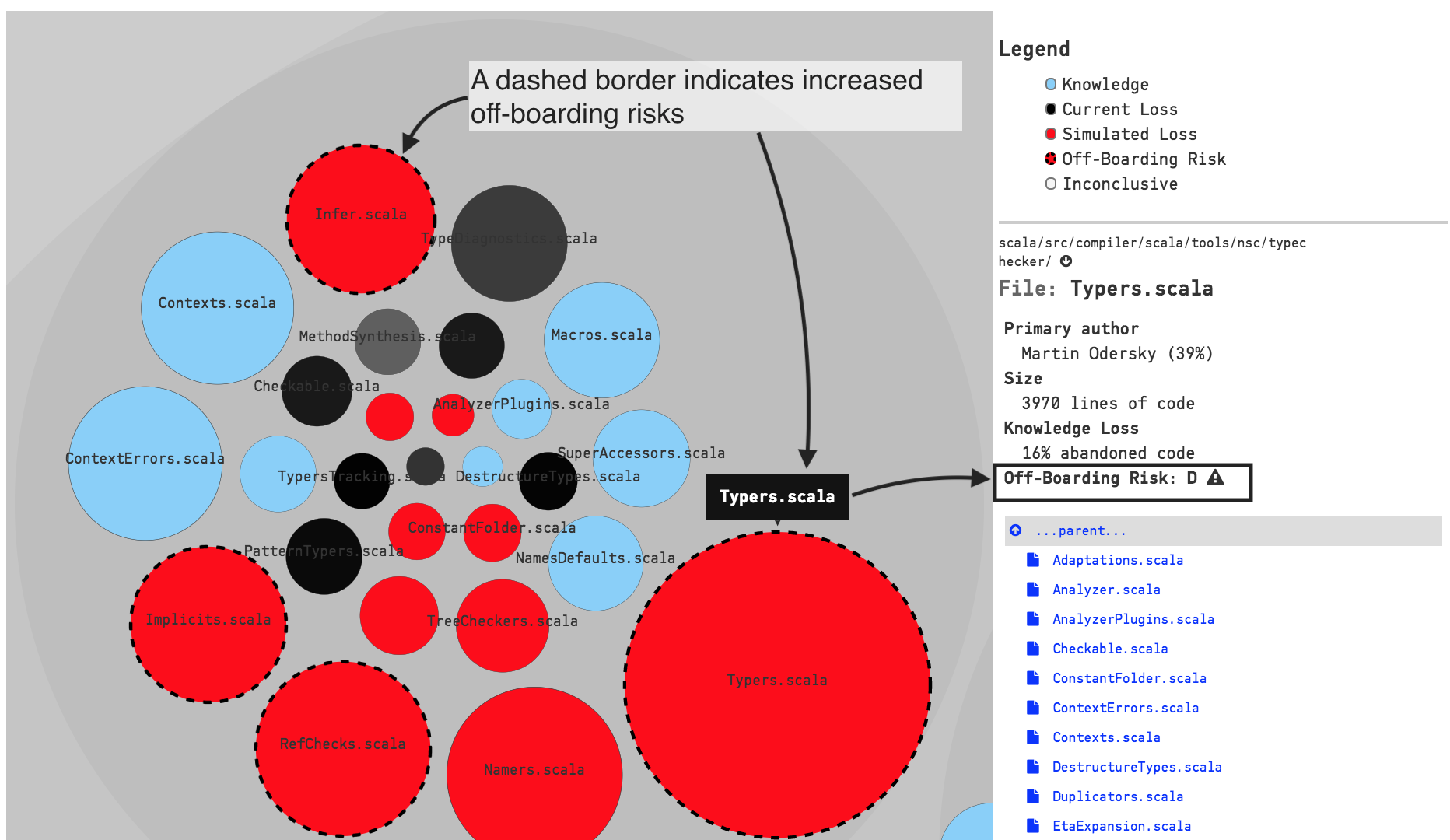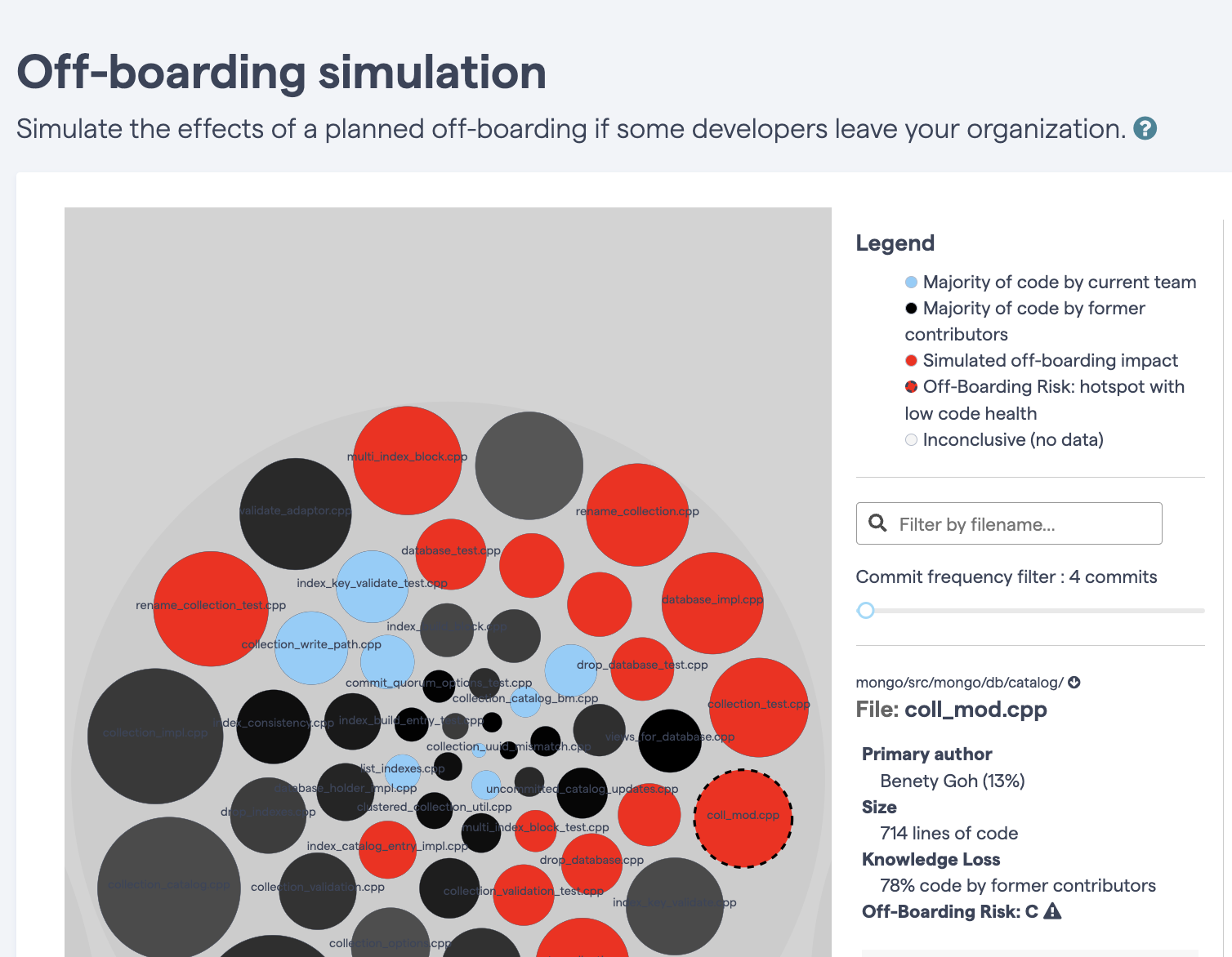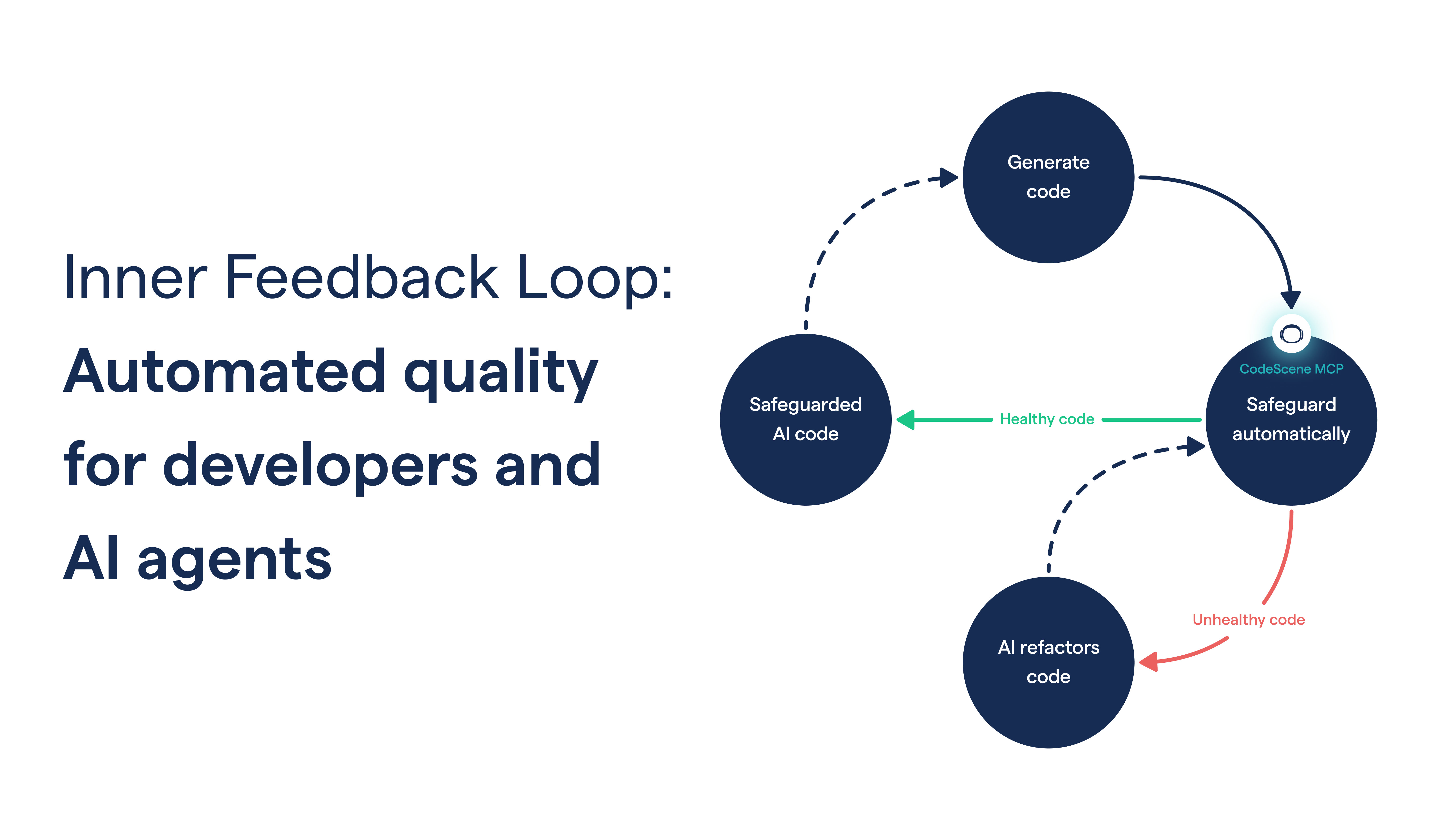Use Case
Developer Off-boarding. Minimize the risks.
What's the potential impact of developer leaving a project? CodeScene lets you simulate developer off-boarding while they are still aboard. Identify off-boarding risks and areas of code in need of a new main developer.


Simulate Off-boarding effects
CodeScene lets you simulate developer off-boarding while they are still aboard. Identify off-boarding risks and areas of code in need of a new main developer.

Auto-detect high risk areas
CodeScene auto-detects high risk areas in the off-boarding simulation. That is, if a major hotspot is in the head of a developer who might leave, we consider that an increased off-boarding risk.

Guide On-boarding
Use CodeScene’s Off-boarding Simulator to identify high-risk code that might get abandoned as a result of a developer leaving, plan time for onboarding new developer in that part of the code. Schedule additional time for learning.
Why try Off-boarding Simulator?
Detect Off-boarding risks by combining technical and social information
Look for technical gaps
Some codebases have a high degree of technical sprawl. An off-boarding could lead to a situation where you have code implemented in a programming language that none of the teams master.
Detect and eliminate risks
Visualize abandoned code. Look for components that are entirely in the heads of former contributors. That's where the largest risk is.
Support team planning
Prepare if entire components or sub-systems are at risk. Use insights to re-prioritize or re-plan features that require extensions of those. components
Automated integration with all major Git hosting platforms
Open REST API for custom integrations
Support for 28+ programming languages
Automated Code Reviews with Pull Request Integration
Detect code quality issues via an automated code review.
Stops degradations of your code quality. Get early warnings.
CodeScene acts as a quality gate. Only merge healthy code.
Testimonials
What are our amazing customers saying?

"It allows us to be proactive and visualise the impact of a developer leaving a team. On rapidly growing teams, it is important to see where those knowledge islands and risks are."
Ben Holm
- Senior Director of Engineering, VidMob
“In an early start-up stage, you often have situations where everything is in the mind of one key developer. However, you get to a point when that is no longer sustainable and becomes a real risk to the growth and potential of the company. You get to that point you need a reliable tool to guide you.”
Marcus Rydberg
- Co-founder and CTO, Luminare
More ways to use CodeScene
Discover other use cases

Discover the inner developer loop that transforms AI from a simple code generator into an engineering partner that understands and protects...
Adam Tornhill

Explore explainable AI for software engineering: from code generation to program repair, discover why explainability is key to trust and ad...
Markus Borg

Technical debt slows teams down. Learn how explicit requirements, ISO 5055 standards, and CodeScene’s Code Health can guide sustainable cod...

